Learn how to make an einkorn sourdough starter at home with just two ingredients and a little bit of time.
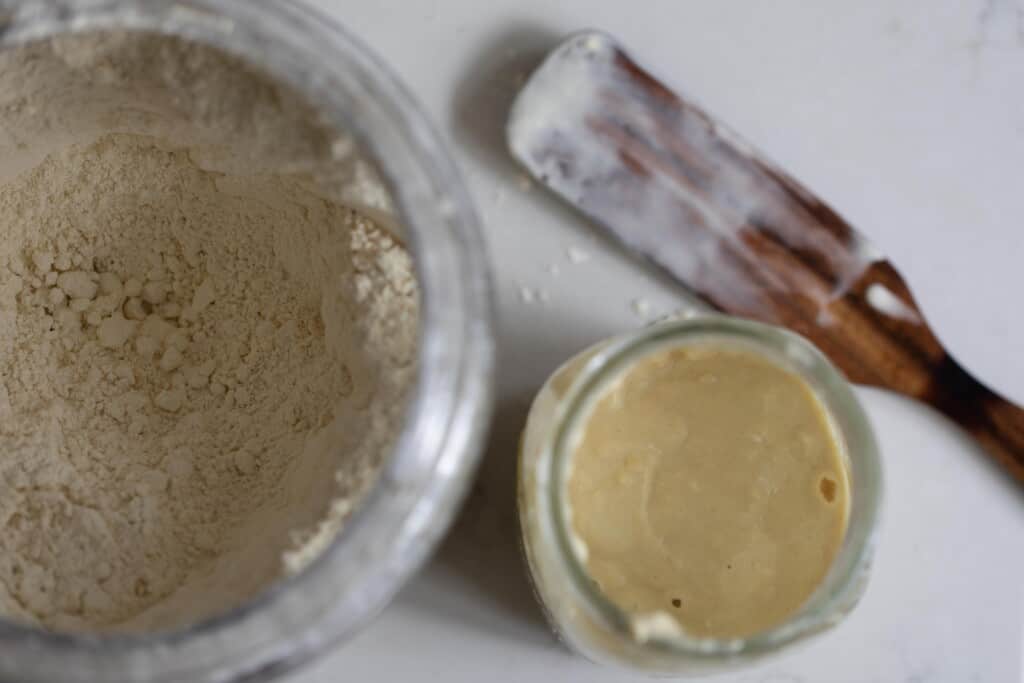
Raise your hand if you love all things sourdough and have a hard time eating unfermented grains because they taste so mediocre! It’s not just me, right?
Sourdough is healthier for you, because it is breaking down all the anti-nutrients and allowing your body to absorb those nutrients found in grains more easily. But let’s face it, it is also way more delicious.
And for those who have a hard time digesting grains, sourdough can be your golden ticket to eating grains again. But what is better than regular sourdough for this? Einkorn sourdough.
Einkorn flour is more easily tolerated by those who have gluten sensitivities. It is one that doesn’t need to be fermented for better digestion, though einkorn is even easier to digest and the antioxidants present in the flour are even more bio-available.
Plus, einkorn is just a delicious flour to use. It has more of a nutty and buttery taste. Yum!
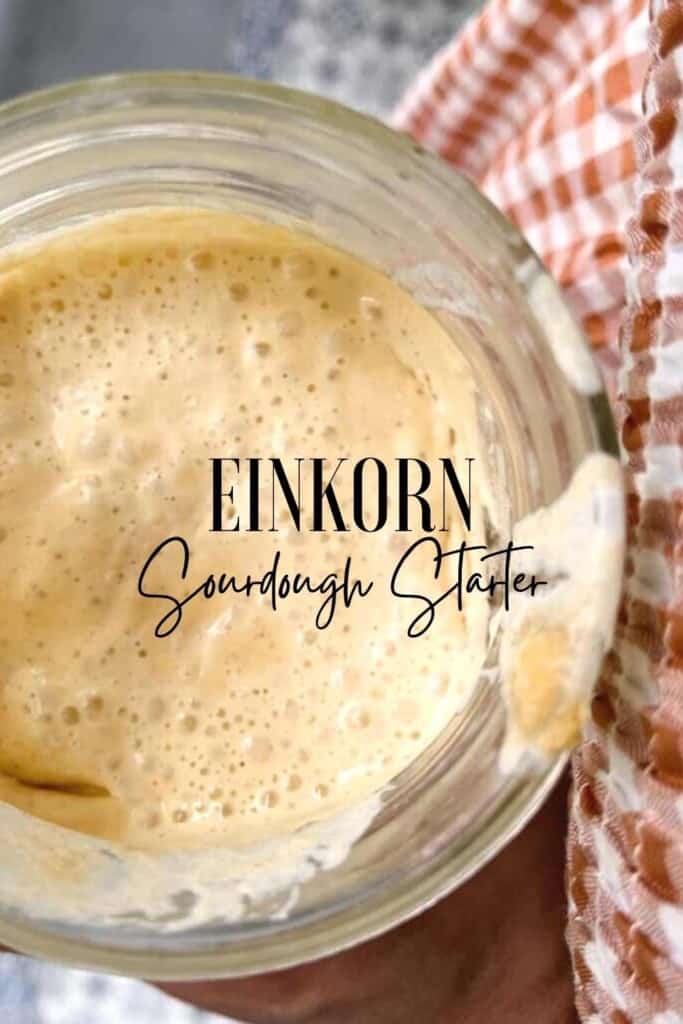
Tips:
- The absolute easiest way to create an einkorn sourdough starter is to start feeding your regular wheat sourdough starter einkorn flour. Eventually, after the fifth feeding of einkorn flour with discarding (or using), your starter will be 96% einkorn.
- Einkorn absorbs less liquid than wheat flour, so you will want to feed the starter a ratio of 1 to 1/2 flour to water. Since einkorn is a little more expensive than wheat flour or all-purpose, I feed my starter with 1/2 cup flour and 1/4 cup water.
- For making an einkorn sourdough starter, I prefer to use all-purpose einkorn flour over whole wheat. If you choose to use whole wheat einkorn, you will need a little less flour.
- Your sourdough starter should be ready to use within a week, but it may not be mature enough to bake bread for about 4 weeks.
- Don’t toss out your sourdough discard. Rather, use it to make discard recipes.
Your sourdough starter should be ready to use within a week, but it may not be mature enough to bake bread for about 4 weeks.
Why einkorn?
It is an ancient wheat that is much easier to digest and doesn’t require fermenting to break down phytic acid. It is also one of the only wheats not hybridized by modern farmers.
Most wheat today has been hybridized for better baking (aka higher protein) and better yields.
It has a higher protein content and has less starch compared to modern wheat. It also doesn’t have the same inflammatory response that refined flour can have.
Ingredients:
Einkorn flour – I prefer all-purpose einkorn flour for creating a starter. You can do whole grain einkorn for this process, but I like the results better with all-purpose flour. If you use whole grain you will need less flour starting out.
Water – Filtered, unchlorinater water. I filter my water with a Berkey water filter.
That’s it! Just two ingredients.
Tools:
Jar or bowl: This needs to be large enough for the starter to be able to double in size without spilling over. I like to use large canisters, but when you are just starting out, wide mouth mason jars work well.
Measuring cup: I use a dry measuring cup to measure out the amount of flour and use it for water, as well. Rebellious, I know.
Non-metal spoon: Some people swear that sourdough reacts to metal and doesn’t do as well. While I’ve never had an issue, I usually use a wooden spoon or a silicon spatula to stir.
FAQ:
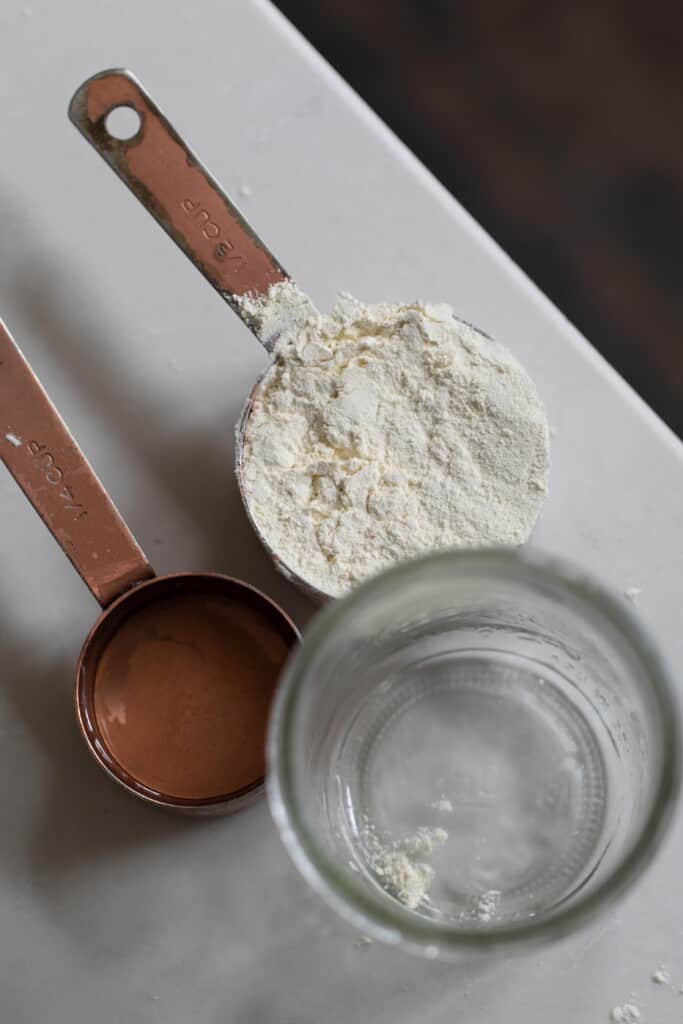
Can I use einkorn flour in my sourdough starter?
Yes. There is a little tweaking that needs to be done since einkorn doesn’t absorb as much liquid as regular flour. So I will feed my einkorn starter a ratio of 1 to 1/2 flour to water.
Is einkorn good for sourdough?
Yes. Sourdough bread made with einkorn is absolutely delicious. The process is similar, but einkorn’s gluten structure is different, so you do not need to do the stretch and folds like regular sourdough bread. Rather, you flatten and fold.
Does einkorn flour cause inflammation?
No. Refined flour is most likely going to cause inflammation. According to this study, einkorn bread actually had an anti-inflammatory effect. (source)
How do you maintain an einkorn starter?
If you leave it out on the counter, you will want to feed it every 12 hours with a flour to water ratio of 1 to 1/2. If you are not going to be baking with it everyday, you can put it in the fridge with a lid and feed it once a week.
What is the healthiest sourdough starter?
There seems to be much debate on this. Some say whole wheat is healthiest, while others say rye, but in reality, I think it comes down to whatever flour you can afford or prefer. Sourdough products are healthier than their unfermented cousins, so choose the best quality for the flour you want to use. Whether it be einkorn, whole wheat, rye, or all-purpose, all are delicious and nutritious.
What is that gray liquid on the top of my starter?
That is known as a hooch and is an indication that you need to feed your starter more. It is harmless and can be poured out, and then you will feed your starter again.
What should a sourdough starter smell like?
A mature starter will smell yeasty and fermented. The more mature, the stronger the smell will be. If it starts to smell like vinegar, then that is an indication that it is not being fed enough.
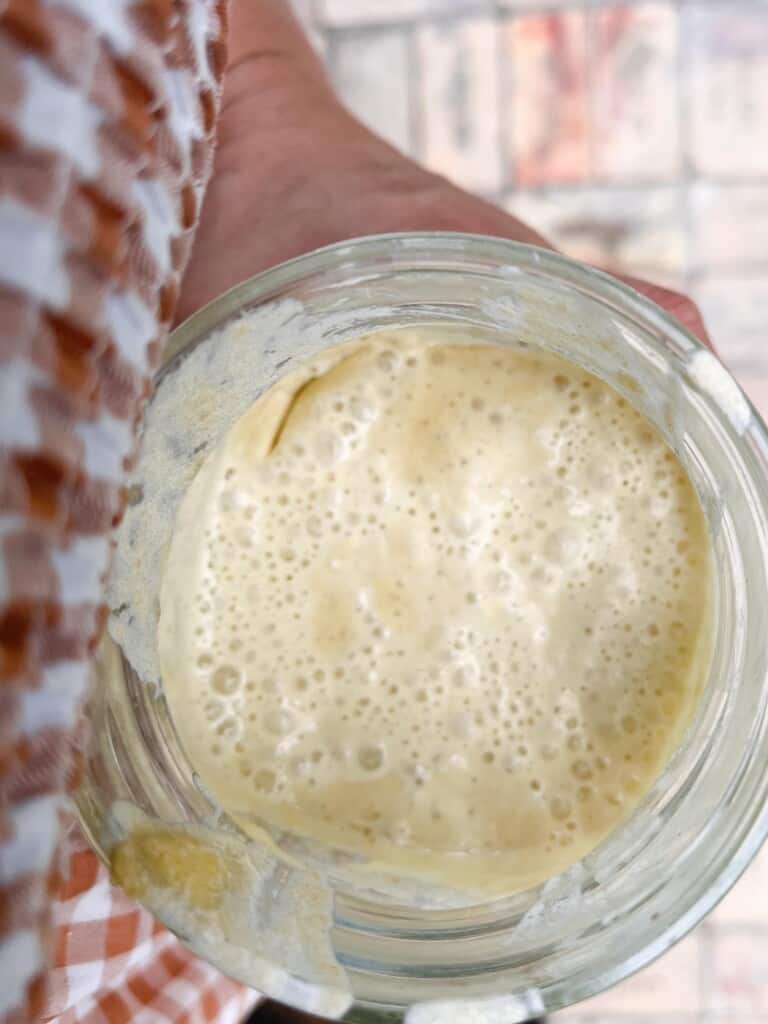
How To Make An Einkorn Sourdough Starter
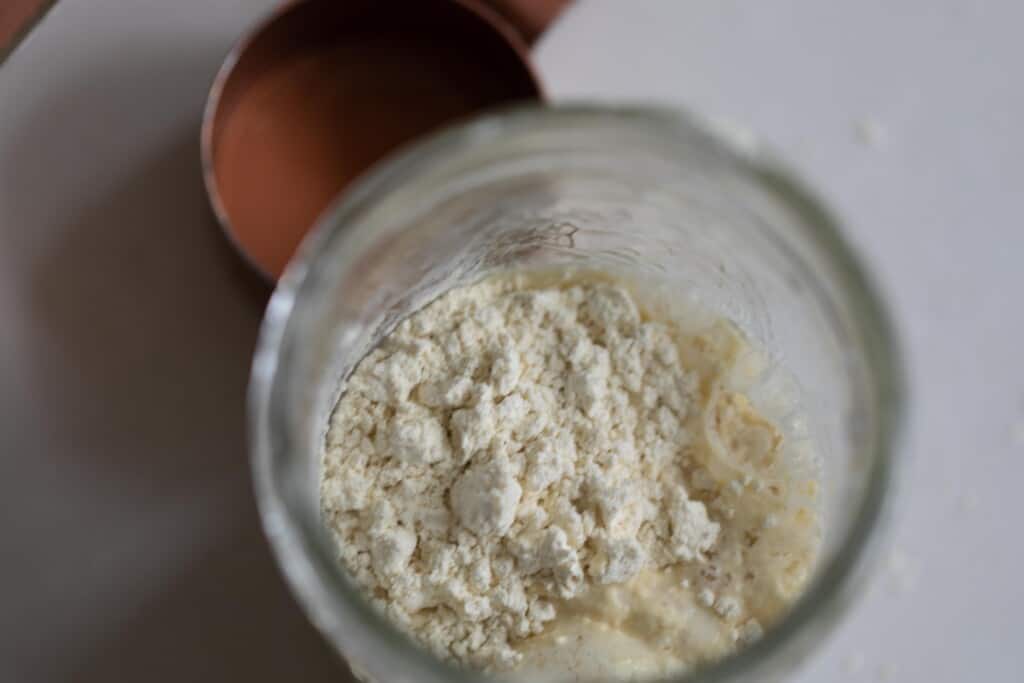
Day 1:
Mix 1/2 cup of flour and 1/4 cup filtered water.
Stir vigorously, making sure to incorporate everything well. Scrape down the sides.
Place a clean tea towel over the bowl and set aside. Allow it to sit for 24 hours.
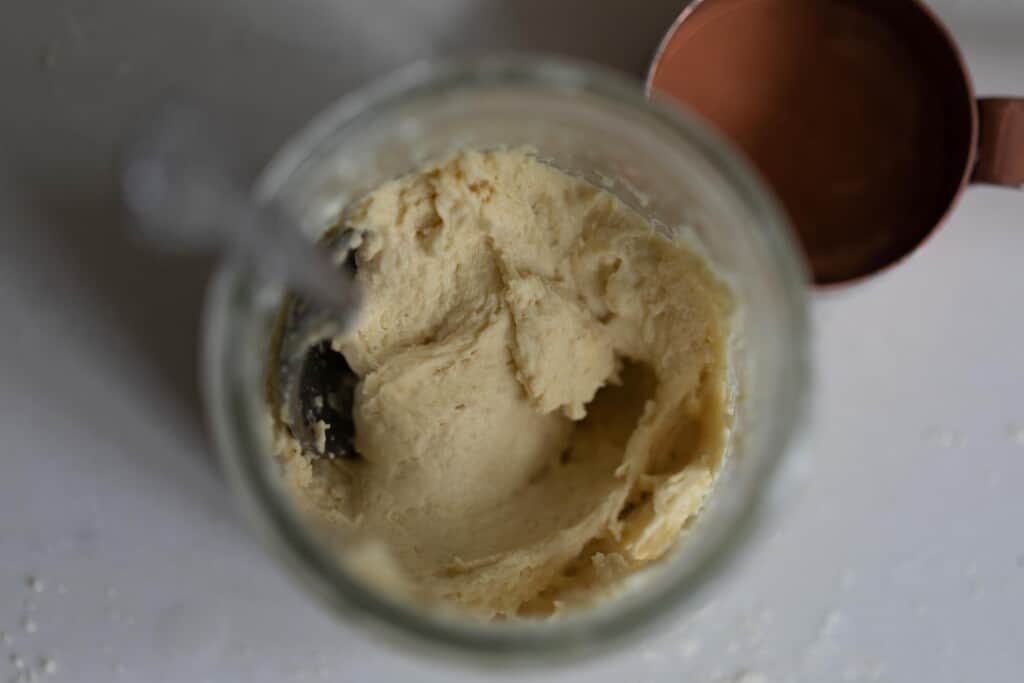
Day 2:
Discard half of the mixture and repeat the process. Add 1/2 cup flour, 1/4 cup water, stir well, and cover.
Discarding half of the mixture is important in the early days of your starter. By day four, you would have so much sourdough starter that it would be a overflowing mess. But also, removing half ensures that you are feeding your growing colony of beneficial yeast the correct amount of flour and water. If you skipped this step, there would be too much starter and not enough food, creating a weak colony.
If you cannot fathom tossing your einkorn starter (I’m with you, especially since einkorn isn’t the cheapest flour), then use it in a discard recipe like pancakes.
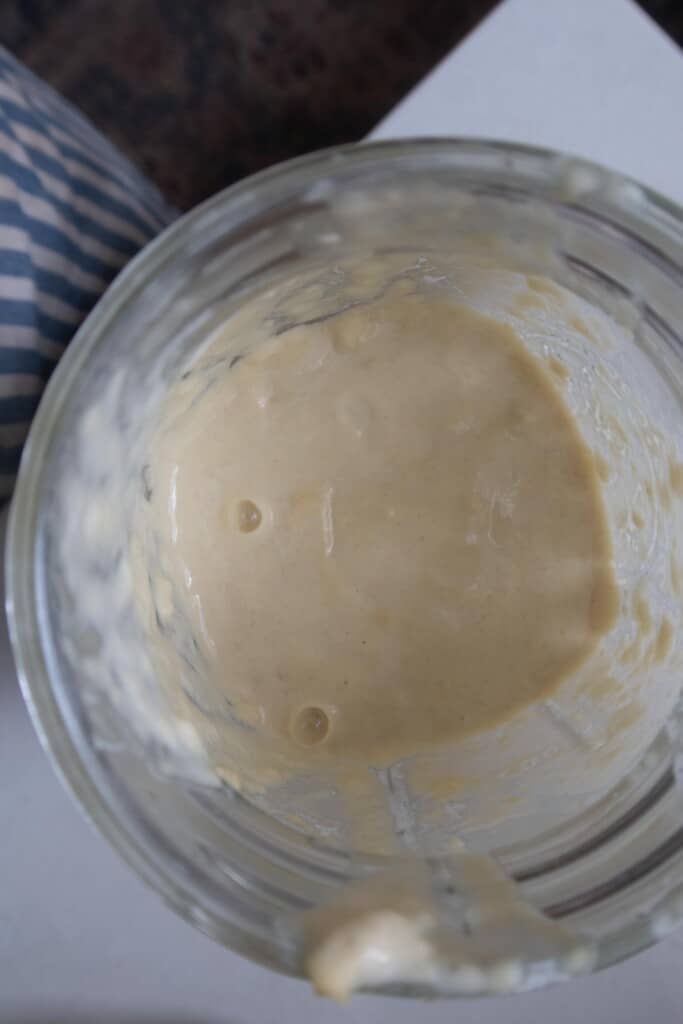
Day 3-5
Repeat the day two instructions for days three through five. Discarding half, then feed.
Day 6 & 7
Every 12 hours, discard half the mixture and feed 1/2 cup flour with 1/4 cup water and mix well.
By day seven, there should be enough beneficial bacteria and yeast present to bake fermented sourdough goodies. Einkorn sourdough bread may not be able to bake for a few weeks as your starter matures.
You will know it is ready if by 4-12 hours after you feed it, it bubbles and doubles in size.
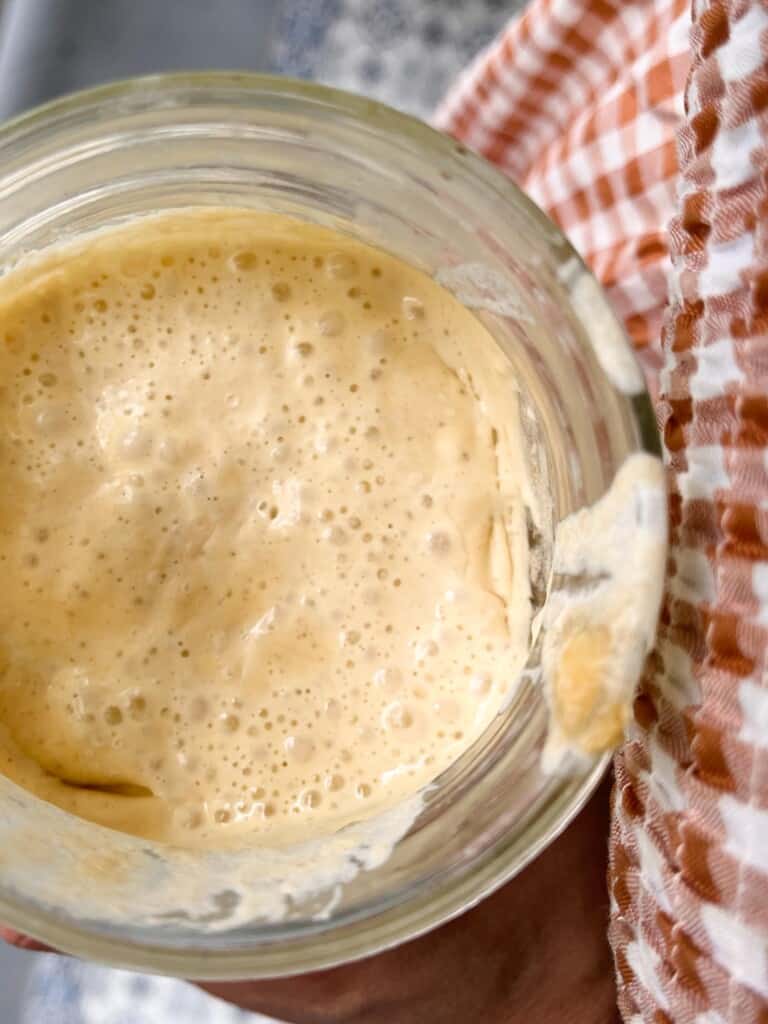
Sourdough Starter Maintenance
Sourdough starters can last multiple lifetimes and have been known to be passed down through generations. You simply need to take proper care of them, which is pretty easy to do.
If you plan to bake often, you can leave it on the counter and feed it twice a day. Otherwise it can be placed in the refrigerator.
Most people probably won’t use the starter every single day, so unless you own and operate a bakery, I would recommend storing it in the refrigerator between uses.
In the refrigerator for occasional use
By storing it in the fridge, you can feed the starter once a week and then just pull it out and feed before you plan to bake with it. Storing it in the refrigerator slows down the fermentation process, reducing the amount of feeding required.
I use my starter a couple times per week and plan bulk sourdough baking (like my bulk sourdough bread making… it’s life changing). If I plan to make something on Sunday morning, for example, I will pull my starter out of the fridge Saturday morning and feed it. By Saturday evening it is bubbly and ready to go for starting a batch of bread. Then I will feed the starter and place it back into the fridge until I need it again.
Find My Other Favorite Einkorn Recipes:
- Einkorn Cinnamon Rolls
- Einkorn Sourdough Bread
- The Best Einkorn Pie Crust
- Einkorn Chocolate Chip Cookies
- Gingerbread Cake With Einkorn Flour
If you try this recipe and love it, I would love if you gave it 5 stars! Thank you! Tag me on Instagram @farmhouseonboone.
Einkorn Sourdough Starter
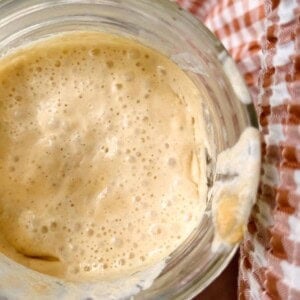
Ingredients
- Einkorn flour
- Water
Instructions
Day 1:
- Mix 1/2 cup of flour and 1/4 cup filtered water.
- Stir vigorously, making sure to incorporate everything well. Scrape down the sides.
- Place a clean tea towel over the bowl and set aside. Allow it to sit for 24 hours.
Day 2:
- Discard half of the mixture and repeat the process.
- Add 1/2 cup flour, 1/4 cup water, stir well, and cover.
Day 3-5
- Repeat the day two instructions for days three through five. Discarding half, then feed.
Day 6 & 7
- Every 12 hours, discard half the mixture and feed 1/2 cup flour with 1/4 cup water and mix well.
- By day seven, there should be enough beneficial bacteria and yeast present to bake fermented sourdough goodies.
- You will know it is ready if by 4-12 hours after you feed it, it bubbles and doubles in size.
Notes
- The absolute easiest way to create an einkorn sourdough starter is to start feeding your regular wheat sourdough starter einkorn flour. Eventually, after the fifth feeding of einkorn flour with discarding (or using), your starter will be 96% einkorn.
- Einkorn absorbs less liquid than wheat flour, so you will want to feed the starter a ratio of 1 to 1/2 flour to water. Since einkorn is a little more expensive than wheat flour or all-purpose, I feed my starter with 1/2 cup flour and 1/4 cup water.
- For making an einkorn sourdough starter, I prefer to use all-purpose einkorn flour over whole wheat. If you choose to use whole wheat einkorn, you will need a little less flour.
- Your sourdough starter should be ready to use within a week, but it may not be mature enough to bake bread for about 4 weeks.
Nutrition information is automatically calculated, so should only be used as an approximation.
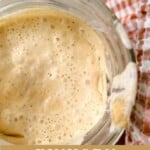
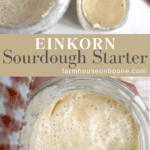



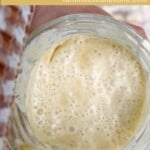

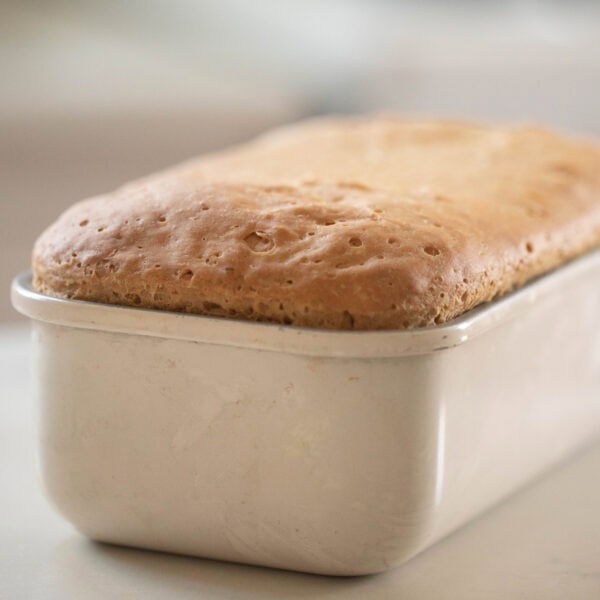
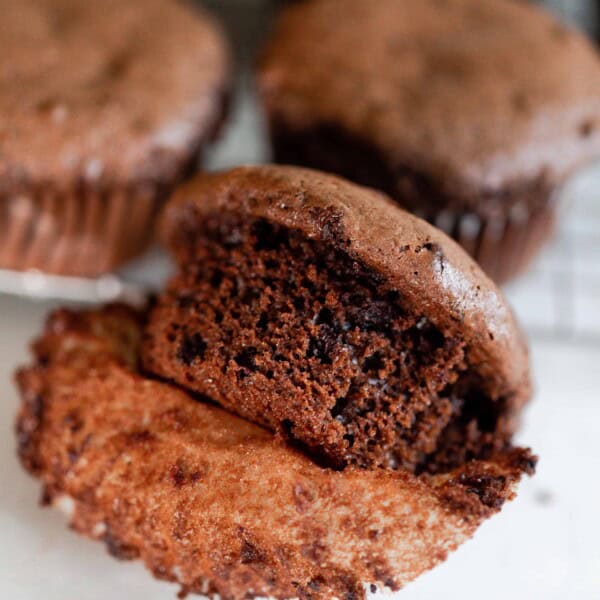
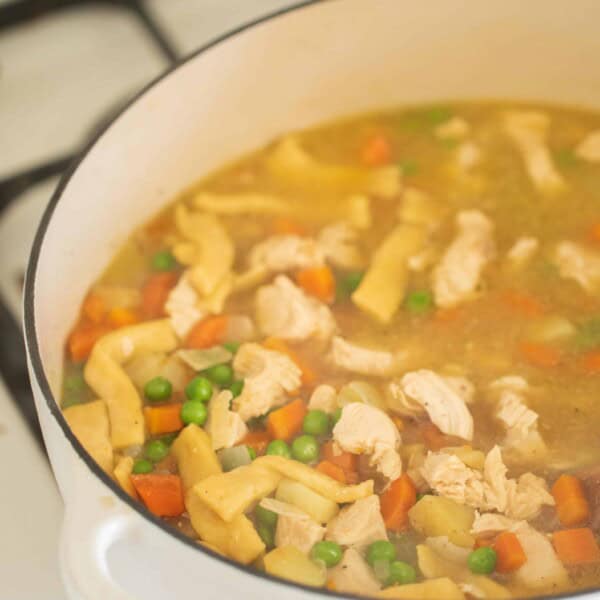
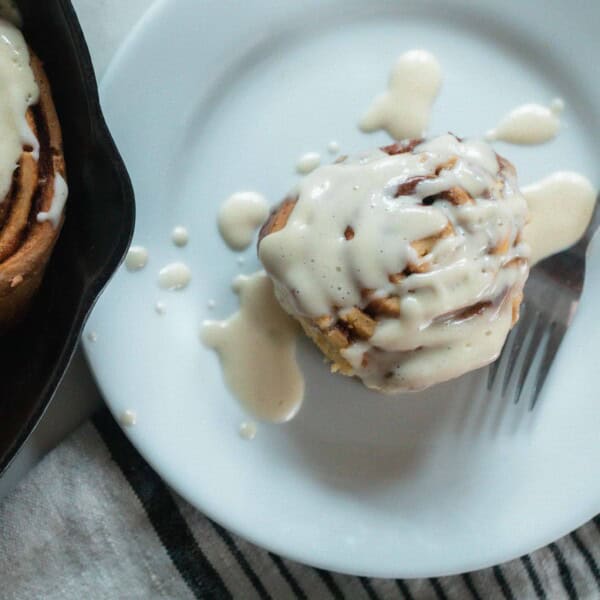






So I feel like my starter is ready to use. I have kept my discard in the refrigerator would it be ok to put it in with my starter? Is that ok or would it mess it up? Will the discard ferment?
You wouldn’t want to add the discard back into the starter. You want to keep the starter healthy and the wild yeasts to continue to grow by feeding and discarding. If there is too much starter and it doesn’t get fed enough, it won’t be very healthy.
Thank you for your post on starter. Do you have a cookbook available to purchase. Gluten does bother many of us. Being able to make healthy breads would be a delight. Baking and pasta are a treat.
I have started a sourdough starter with whole wheat an I plan on using 1 to 1 mixture of whole grain and all purpose einkorn. Hoping for the best of both worlds.
I am actually working on one currently! I hope you have great success with your baking.
So glad I came across your website and YouTube channel – You are a joy to watch – I am learning so much – thank you! I started my Einkorn Sour Dough Starter on 5/29 and it is fabulous – I used the Discard to make your pancakes – Definitely excited to continue learning to bake more. Thank again for so much info in your You Tube Channel Vid’s also -Loving your decor’ – life – family dynamics – Inspiring for sure! Thank ya! Angie in Alabama
Thanks so much for your kind words, Angie! Hope you enjoy all the recipes!
Once it’s ready can I save it in the fridge?
If you are not going to be baking with it everyday, you can put it in the fridge with a lid and feed it once a week.
Branching off this question….if I AM baking with it daily can I always have it out of the refrigerator?
We already have an active Einkorn starter but I want to try your method of refresh. How many grams of starter do you reserve for your 1/2 cup flour, 1/4 water refresh?
I don’t usually measure.
Hi Lisa
I just started my einkorn sourdough starter and I’m wondering if the einkorn discard can be used in all of your discard recipes?
Thanks
Kim
Hi Kim! Yes, that should work fine as long as you are not swapping out the flour in the recipes for einkorn flour. Then they will need some adjustments.
My starter is 7 days old, seems to be doing well. We are going out of town for a 4 day weekend this weekend. My questions is can I put in the fridge at this point until I am ready to bake? Also, do I feed before it goes into the fridge? Thank you!
If your starter is ready to use (you can check it with the float test), then yes, you should be able to put it in the fridge and it will be fine when you return. As far as feeding/putting it in the fridge, I talk about how I do this in my video here: https://youtu.be/Yf6t6GcjH8E
Instead of leaving it in a bowl when you start it and feed it, can you place it in a mason jar with a lid?
You can place it in mason jar. I would cover it with a towel rather than a tight lid because you want the starter to be exposed to the air.
Can you explain what you mean by the starter may not be mature enough to bake bread for about four weeks?
Sometimes a starter may not be ready (have enough yeast) to create enough rise in bread. You will know if your starter is ready for break baking if it doubles in size after about 4-12 hours after feeding it. Hope that helps.
Hi, Lisa! I’m wondering if you could please describe how to feed the mature starter the night before you want to make bread? Is it the same concept — 1 to 1/2 ratio? Say for example I need 3 cups worth of refreshed starter, how would I achieve that? (Sorry if I missed your explanation somewhere already, I’ve looked everywhere!)
I feed closer to a 1 to 1 ratio. I like mine to be like pancake batter. That being said, I never measure. Essentially you are creating yeast, and any amount of flour and water will do that in a mature starter. Hope that helps!